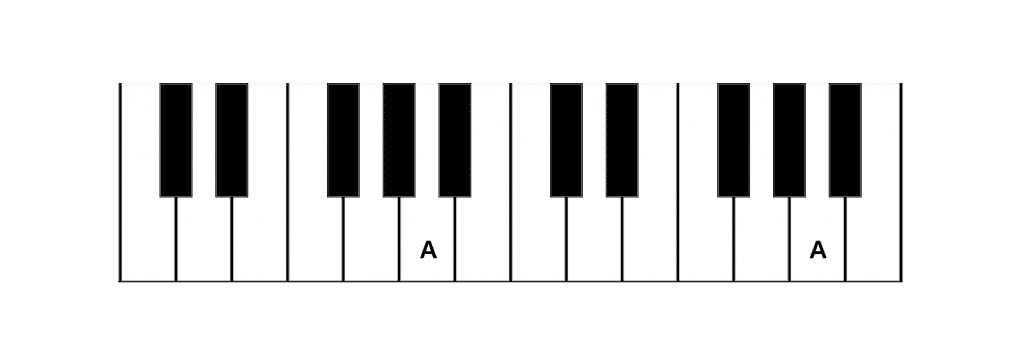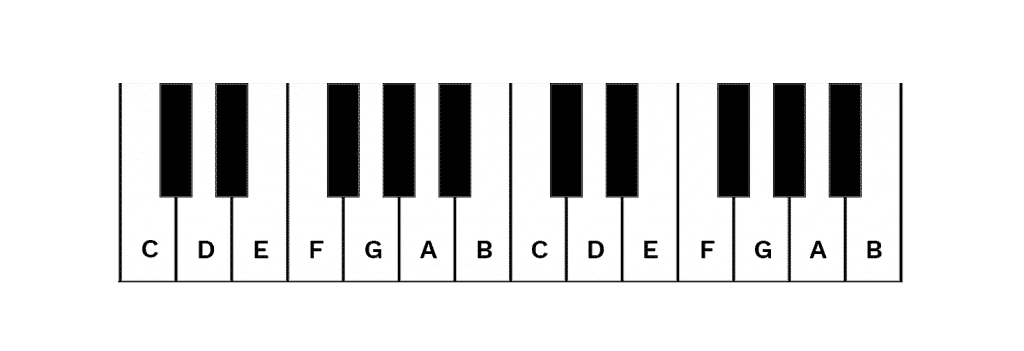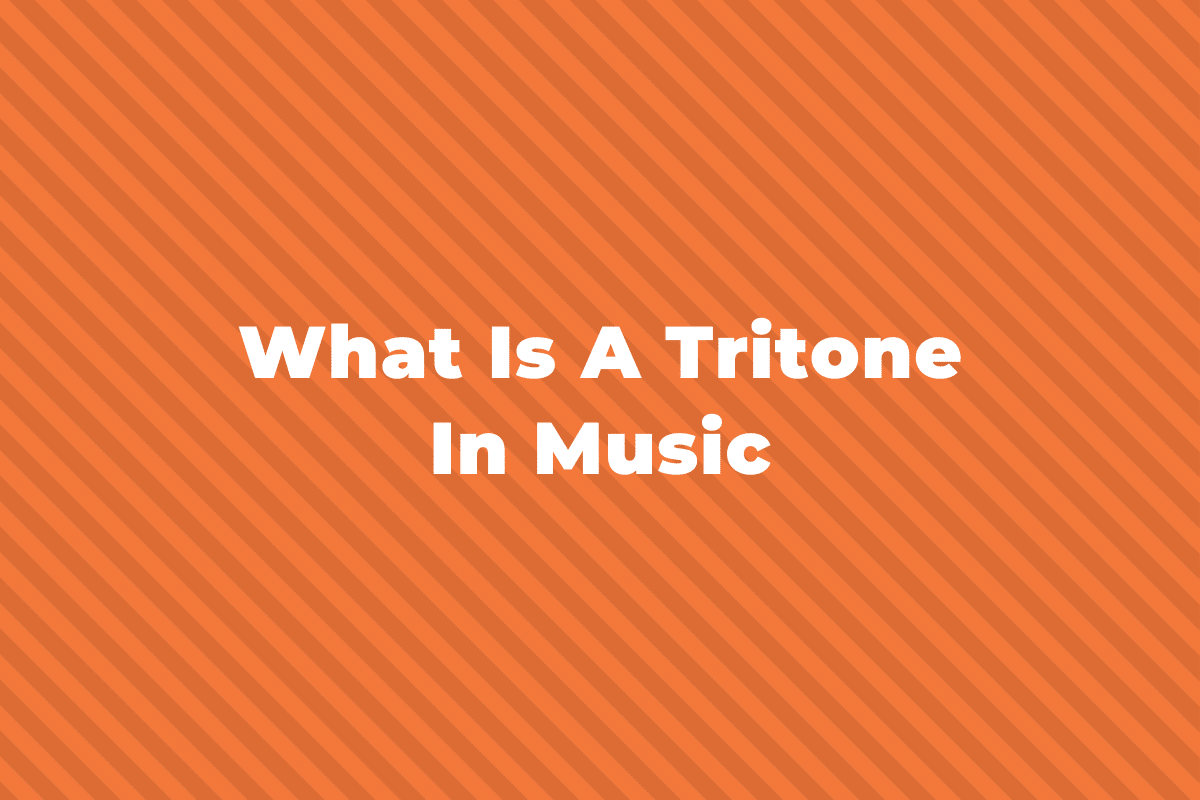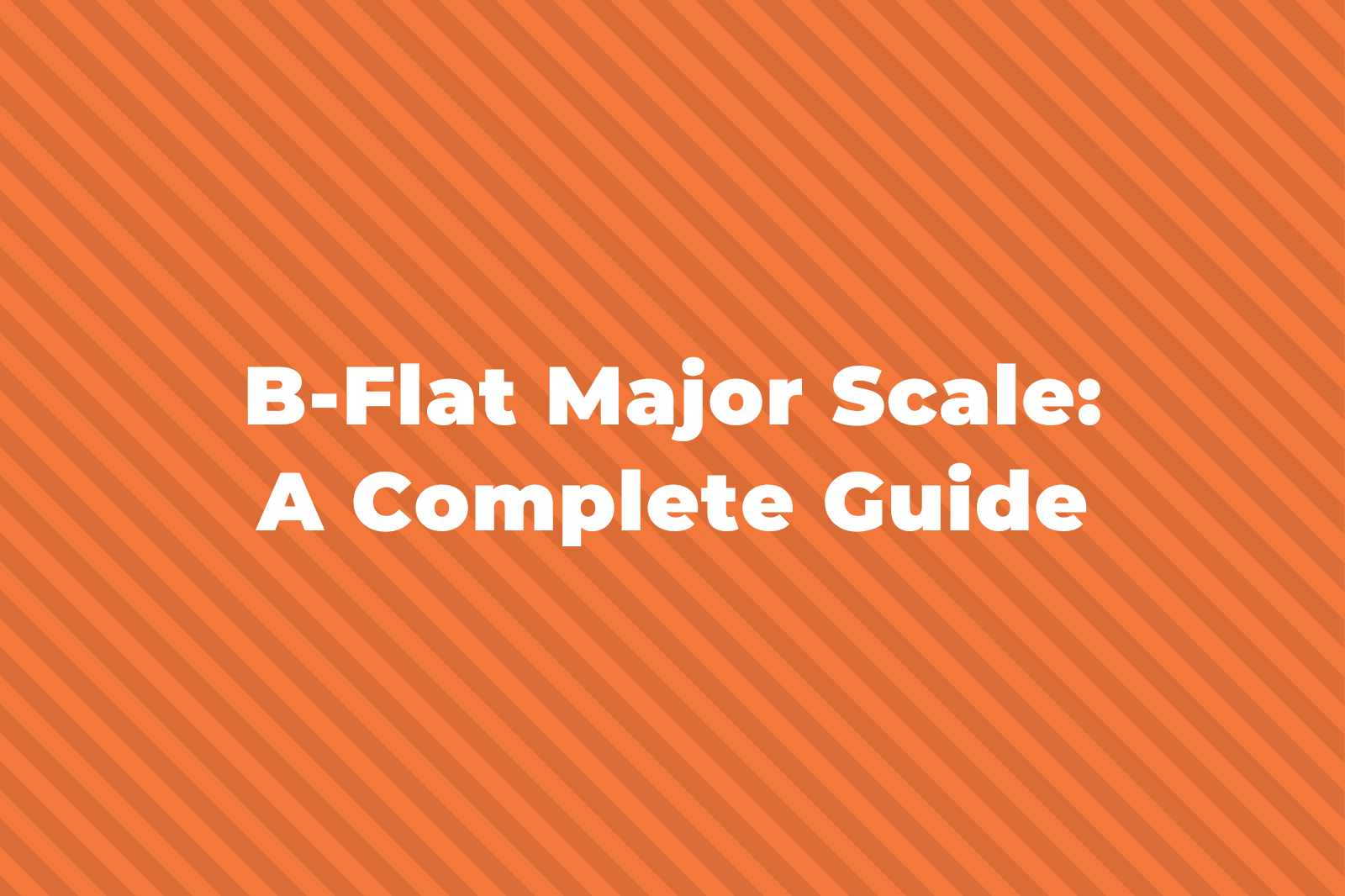As a child, when learning to read and write, one of the first things you learn is all the letters of the alphabet. It’s the same in music, as we use the same alphabet to describe notes.
In this post, we’re going to be learning what the musical alphabet is and how we use it to describe the different pitches of notes. Before we do that, though, let’s cover what exactly pitch is.
Pitch and the Staff
In music, we use the word Pitch to describe whether a musical note is high or low sounding.
When then write those notes on a stave, also known as a staff, that looks like this:

When a note is higher in pitch, we write it higher on the stave.
And when a note is lower in pitch, we write it lower on the stave.
You can easily see on a staff what notes are high-pitched and which are lower, because they are literally written “higher” on the staff.
The Letters of the Musical Alphabet
In western music, we name the different pitches of notes by the first seven letters of the alphabet:
A, B, C, D, E, F and G.
Each line and each space on the stave represents a different letter and a different pitch.
A keyboard has groups of two black notes followed by a group of three black notes.
We can find where the note A is on a keyboard as it’s always between the second and third black notes in the group of three as shown below:

From here we can then work out what all the white notes are.
We go through the alphabet until we reach the note G, then we start over again back at A.




